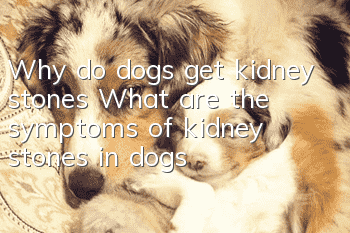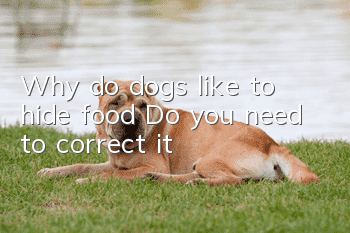Xiaobai’s guide to raising a dog How to raise a dog well so that it doesn’t get sick

Key points on feeding dogs for novices
In order to raise a good dog, in addition to providing high-quality feed and a reasonable mix of dog food, you must also have appropriate feeding Feeding methods should be kept, and feeding records should be kept regularly, and more advice should be sought from experienced people. Generally speaking, the key points of dog feeding are as follows:
Choose food
Selecting food is a very important thing for dog feeding, and the first thing to consider is the balance of nutrition. Here are several criteria for choosing the right dog food: age (puppies, adults, middle-aged dogs, senior dogs), level of physical or physiological activity (active dogs, sporting dogs, breeding dogs), and size ( small, medium, large).
Feed Right
How you eat is just as important as whether the nutrients in your diet are completely balanced. Therefore, when consuming commercial food, we must strictly follow business instructions. If you want to eat homemade food, you should stop thinking like "My dog eats what I eat," "My dog eats what he likes," or "My dog only eats." Finally, it should be noted that dog food should not contain table crumbs, candies, cakes, etc. In addition to summer, warm feed should also be fed. The feed temperature should be around 40 degrees Celsius, not too cold or too hot. Cold food can be fed in summer, but the feed must be heated in winter. It is best not to be hot to the touch, preferably around 30 degrees Celsius. Because food that is too cold can easily lead to a bad appetite, and feed that is too hot will not only affect the dog’s appetite, but may also burn the canine teeth. Dogs will refuse to eat when the temperature of food exceeds 50 degrees Celsius. Also note that dogs should not exercise more vigorously before or after eating.
Balanced diet
Whether it is homemade food or commercial food, it should contain all the nutrients the dog needs, and it should be nutritionally adequate and in the appropriate proportions of various nutrients. , can be adapted to the dog's size (small, medium, large), physiological state (maintenance, breeding, exercise), age (puppies, adult dogs, middle-aged dogs, elderly dogs), etc., and the nutritional ratio should be consistent with the dog if necessary. Adapt to the state of illness.
Strict hygiene requirements
Commercial food provides the best guarantee of hygiene and health. As long as it is suitable for dogs to eat, there is no risk of poisoning. Opened canned dog food, fresh food, or thawed food should be refrigerated, while dry food should be placed in a sealed bag and stored in a dry place. Pay attention to the dog's eating situation when feeding. If the dog has leftover food or does not eat, find out the cause in time and take measures. Take away the leftover feed immediately and do not leave it for a long time for the dog to eat at any time. If it deteriorates, it cannot be fed again. When the dog is too hungry, don’t feed a lot at once. Feed half of the previous meal first, and then wait.After the dog has finished eating, feed it again after a while.
Special care should be taken for puppies and sick dogs
It is best to feed puppies four times a day, from less to more, from low to high, but best Eat a fixed amount of food, add or reduce it, and don't overeat. For sick dogs, you should feed more liquid food, lean meat, eggs or other digestible, stimulating and comprehensive "sick" foods, and pay attention to letting the sick dog drink more water.
Regular feeding
Feeding dogs should be done regularly, quantitatively, and in a fixed location and with utensils. Timing can develop a dog’s timing conditioned reflex, allowing the dog to secrete gastric juice on time, increase appetite, and promote digestion and absorption. Generally, adult dogs are fed twice a day, once in the morning and once in the evening, and slightly more at night; dogs under 1 year old are fed 3 times a day; dogs under 3 months old are fed 4 times a day; puppies under 2 months old, Feed 5 times a day.
The pattern of dog food can be renovated, but the quantity should be relatively stable. The size of each portion of food depends on the animal's daily energy requirements and the calories contained in the food, and should also be adjusted as the dog's weight changes. The feeding location can be either inside or outside the kennel, but dogs are generally fed in the kennel. The purpose of a fixed location is to keep the environment relatively stable and facilitate dog management. Because some dogs will lose appetite or refuse to eat after changing feeding places.
Each dog's utensils must be fixed and cannot be used randomly or mixedly. Especially when many dogs are fed, in order to prevent the spread of disease, care should be taken not to exchange each dog's bowl. Dog food should be washed promptly after eating and boiled and disinfected regularly.
Give the dog plenty of water to drink
Give the dog cold water suitable for drinking at any time, and change the water frequently to keep the water fresh. On average, dogs consume at least 60 ml of water per kilogram of body weight per day, and puppies, lactating female dogs, working dogs or those in hot climates consume even more water.
Gradually change food
A dog’s diet cannot be fixed, single, and unchanged, but should change gradually. But remember, there should be a transition period (usually one week) between different diet structures, because only in this way can the dog's taste, digestion and metabolism organs fully adapt to the changes in food. Moreover, the intestinal microorganisms of dogs are more adaptable to the food eaten than the intestinal microorganisms of humans, and can also restore their functions to digest new foods.
Record the physical condition of each dog
The effects of the dog's diet and any changes in the diet should be recorded using some simple indicators, such as weight changes and hair texture. Use the characteristics of feces, appetite, and daily behavior to fully understand your dog's physical condition.
Consult your veterinarian
Through exercise, veterinarians can also become nutritional experts for patients and healthy dogs. Ask your veterinarian aboutSome conditions of the dog, such as persistent lack of appetite or excessive appetite, excessive weight loss or gain, persistent diarrhea or constipation, worrying health problems or behavioral problems, significant changes in thirst or appetite, etc. These may be signs of illness and require a comprehensive examination of the dog.
The following are the factors that affect a dog’s appetite:
1. Feed: first, too many ingredients that are smelly or too salty; second, Food spoils; third, the taste is monotonous and you get tired of eating it.
2. Environment, such as noise, bright light, interference from other animals or people.
3. Disease: Most diseases can be reflected by changes in the dog's appetite. If your dog does not eat for two consecutive days, then you need to take it to the hospital for a check-up. If this happens , usually the reason is that the dog has some disease.
- What does whole dog food mean? Can puppies eat whole dog food?
- What to do if Bichon Frize has diarrhea? Is it dog plague?
- What to do if a puppy has diarrhea? What causes diarrhea in a puppy?
- What kind of human food can dogs eat? These 10 foods can be used to give dogs extra meals
- How many types of shepherd dogs are there? A huge family tree of shepherds with high IQs.
- What are the symptoms of dog gastroenteritis? Comprehensive understanding of the dog’s glass stomach
- Why small dogs live longer than large dogs What causes longer lifespan
- How to judge whether a VIP is pure or not? Look at this!
- How to treat dogs suffering from canine distemper Home treatment methods for canine distemper
- What’s wrong with dogs having postpartum convulsions? Don’t take postpartum convulsions lightly.



